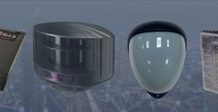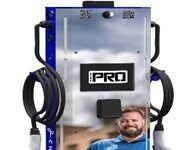
Integrated security solutions are so often recommended by security specialists, while this sounds impressive, what does it actually mean? The short answer is: combining all aspects of security in a layered approach that leaves no vulnerable points.
When we think of integrated security, we tend to think it’s something that only applies to ultra-high security sites that are entirely inaccessible to the public. We generally picture towering fences topped with barbed wire, guard dogs and security patrols, glaring floodlights, deafening alarms, and warning signs.
In actuality, the integrated security approach can be applied to any type of site that needs protecting. This could be a high security data centre or a water treatment plant that needs to be protected for public safety. It could also be a business park that requires open access during the day yet security at night, or even a school, where trespassing, truancy and theft of valuable equipment needs to be deterred, while welcoming environment is also necessary. Even residential properties require integrated security such as front and back garden fencing, CCTV, alarms, and security lights.
To hone in on the ins and outs of an effective integrated security solution, it is helpful to follow the ‘5 Ds’ model of perimeter security. This covers the main components required to create a truly robust security strategy covering fencing and deterrents, surveillance and detection systems, access control, and personnel.
Forming the first line of defence against unauthorised persons gaining access by freely walking onto, burrowing, climbing, or cutting through to the site is crucial but not the sole purpose of perimeter security. The type of perimeter security will also impact visitors’ first impressions of the premises, so while fencing and security toppings outlining a boundary act as a deterrent, they can also contribute to branding for the company by use of colour or style, or if logos or other signs are fixed to it. This is especially important for schools, who want to create a secure but welcoming environment.
Access control measures, such as gates, bollards, and rising arm traffic barriers, work best when used in conjunction with monitoring. Even on their own, they delay people from entering, however CCTV and other surveillance measures greatly improve their efficiency. Perimeter Intrusion Detection Systems (PIDS) are ideal for discreet monitoring and alert to any unwanted movement, and don’t underestimate the power of sensor-triggered lighting to deter trespassers.
For sites with a threat of vehicle-borne attacks, Hostile Vehicle Mitigation (HVM) barriers should be deployed in the form of stand-off fencing around the main perimeter and barriers, bollards, and gates which restrict vehicle movement. Finally, nothing deters criminals more than the presence of other humans. Employing security patrols and access control staff will remove any sense of opportunity from intruders.
A risk assessment will help site managers assess the most appropriate protection while also considering factors beyond security, including aesthetics, privacy, and noise reduction. The location of the premises will impact certain elements such as coatings. As a base standard, steel fencing must be hot dip galvanised or Galfan® zinc alloy coated to protect it from rust and corrosion.
To add colour, polyester powder coating is the most durable, low maintenance option which does not chip or crack, Marine coating, is recommended for providing extra durability in coastal areas. If privacy is an important consideration for the site, opt for a solid fence type, however bear in mind this will hinder any line of sight and opens up spaces for intruders to hide behind, so assess the site’s needs accordingly.
The maintenance of security measures is also an important element when considering an integrated approach, to check the system is working as it should be.
Splitting a site into zones is a helpful way to map out where security is needed most and identify if there might be areas that require lower protection to prevent over-specifying. For example, higher-level security measures may be required in a zone that takes security staff longer to reach, to help deter or delay intruders as much as possible. Yet in clear lower-risk areas, it is possible to save budget by installing more frugal measures.
There is no single solution when it comes to securing a site. Every situation must be considered individually, starting with a full risk assessment. We recommend an integrated approach to property security wherever appropriate.
Along with a secure perimeter, this might also include effective lighting in shaded areas and at doors, gates, and shop windows, Perimeter Intrusion Detection Systems (PIDS), and well-placed CCTV. These measures can hinder entry and escape, or increase the chance of discovery and detection. The key message to take away, is that as helpful as modern electronic technology is, in the event of a power failure or malfunction, a site is left vulnerable if this is the only protection you have. Combining electronic measures with traditional, physical security fencing and gates is the only way to have guaranteed protection 24/7











